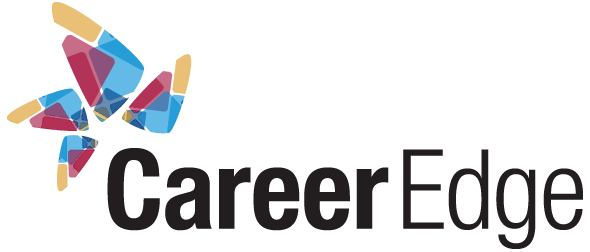
In the dynamic landscape of business, the role of a CEO stands as a pivotal point of organizational success, also reflecting onto a positive company culture. The efficacy of a company’s leadership often determines its trajectory in the market and its adaptability to change.
A good CEO must have diverse traits to navigate the complexities of modern business environments and create a positive culture for employees.
Here, we delve into ten indispensable qualities that characterize a truly exceptional CEO.
People-Centered:
A secure CEO demonstrates people-centric behavior in your own actions and decisions. They show respect, integrity, and fairness in all interactions with employees. Support a healthy work-life balance by offering flexible work arrangements, promoting vacation time, and ensuring manageable workloads.
Additionally, under a good CEO, the employees are provided with competitive benefits and perks. This can include healthcare coverage, retirement plans, flexible spending accounts, and other incentives.
Compassionate:
Taking the extra time to understand the personal and professional challenges faced by employees is a quality a leader must have.
Compassion can be shown by providing flexible policies that accommodate the diverse needs and circumstances of employees. This can include flexible work hours, and providing leaves based on cultural preferences.
Visionary Mindset:
A great CEO is a visionary, capable of seeing beyond the immediate horizon. They possess the foresight to anticipate industry shifts, technological advancements, and emerging trends.
By articulating a compelling vision, they inspire stakeholders and align the organization toward a common goal. Vision serves as a guiding light, steering the company through turbulent waters and charting a course toward sustainable growth.
Strategic Acumen:
Strategic thinking is the cornerstone of effective leadership. A proficient CEO formulates coherent strategies that capitalize on strengths, mitigate weaknesses, and seize opportunities.
They analyze market dynamics, competitive landscapes, and internal capabilities to make informed decisions. By setting clear objectives and deploying resources judiciously, they steer the organization toward strategic success.
Decisiveness:
In a fast-paced business environment, indecision can be costly. A good CEO shows decisiveness, swiftly making tough calls when faced with ambiguity or adversity.
They weigh risks, gather pertinent information, and trust their intuition to make informed decisions. By demonstrating decisiveness, they instill confidence in their team and foster a culture of action and accountability.
Emotional Intelligence:
Emotional intelligence is a hallmark of effective leadership. A great CEO possesses the ability to understand and manage their own emotions while empathizing with others. They cultivate strong interpersonal relationships, foster collaboration, and navigate conflicts with finesse.
By fostering a culture of trust and inclusivity, they unleash the collective potential of their team and drive organizational performance.
Integrity:
Integrity forms the bedrock of ethical leadership. A trustworthy CEO upholds principles of honesty, transparency, and accountability in all their actions. They lead by example, adhering to ethical standards and corporate values even in the face of temptation or pressure.
By fostering a culture of integrity, they cultivate trust among stakeholders and safeguard the reputation of the organization.
Adaptability:
In a rapidly evolving business landscape, adaptability is indispensable. An agile CEO embraces change, proactively responding to market shifts, technological disruptions, and geopolitical developments.
They foster a culture of agility, encouraging experimentation and continuous learning. By staying ahead of the curve, they position the organization for long-term success in an ever-changing world.
Communication Skills:
Effective communication is paramount in leadership. A proficient CEO communicates with clarity, eloquence, and conviction, conveying complex ideas with simplicity and precision.
They engage stakeholders authentically, listen attentively, and foster open dialogue across all levels of the organization. By articulating a compelling narrative, they inspire confidence, alignment, and commitment towards shared goals.
Empowerment:
A visionary CEO empowers others to realize their full potential. They delegate authority, provide autonomy, and nurture a culture of empowerment and accountability. They mentor emerging leaders, cultivate talent pipelines, and foster a culture of continuous development.
By empowering others, they unleash creativity, innovation, and initiative, driving sustainable growth and success.
In the hierarchy of leadership, the role of a CEO is both challenging and rewarding. A truly exceptional CEO embodies a unique blend of vision, strategy, resilience, and integrity. They inspire greatness, cultivate a culture of excellence, and propel their organization toward new heights of success. By embracing these ten essential traits, CEOs can navigate the complexities of the modern business landscape with confidence, purpose, and distinction.
Frequently Asked Questions
Q. What are some toxic leadership traits?
– Micromanagement: When leaders excessively control or closely supervise their employees’ work, it stifles creativity, demotivates teams, and reduces autonomy.
– Lack of communication: Poor communication leads to misunderstandings, conflicts, and a lack of alignment within the organization. It erodes trust and hampers collaboration.
– Closed-mindedness: Leaders who are unwilling to consider new ideas or perspectives limit growth opportunities for the organization and alienate employees who may have valuable insights.
Q. What are the personality traits of a good CEO?
– Empathy: Understanding the needs, motivations, and perspectives of employees, customers, and stakeholders fosters better relationships and decision-making.
– Humility: Good CEOs recognize that they don’t have all the answers and are willing to listen to others, admit mistakes, and learn from feedback.
Optimism: Maintaining a positive outlook, even in the face of adversity, can help CEOs stay focused on opportunities and solutions.
Q. How to be a successful CEO?
– Continuous Learning: Successful CEOs are lifelong learners who actively seek out new knowledge, skills, and perspectives to inform their decision-making.
– Ethical Judgment: CEOs must make decisions that align with the company’s values and ethical standards
Q. How does a CEO inspire and motivate employees?
– Offer Feedback and Support: Provide constructive feedback, guidance, and support to help employees grow and improve.
– Incentives and Rewards: Implement incentive programs and rewards to recognize and incentivize high performance and achievement.
– Celebrate Successes: Acknowledge and celebrate team successes, reinforcing a culture of achievement and positivity.
Q. How does a good CEO balance short-term goals with long-term vision?
– A good CEO understands the importance of balancing short-term goals with a long-term vision for sustainable growth and success.
– While short-term goals are essential for meeting immediate challenges and driving performance, a long-term vision provides direction and guides strategic decision-making to ensure the organization’s longevity and relevance in the future.




